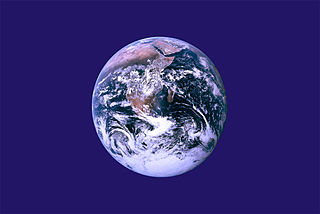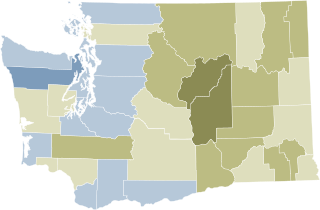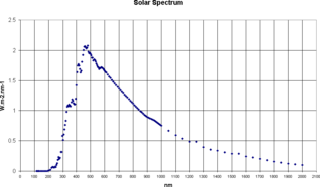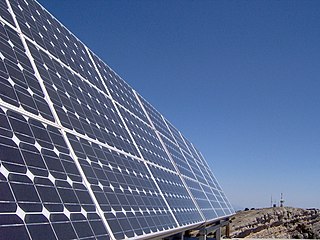
Renewable energy, green energy, or low-carbon energy is energy from renewable resources that are naturally replenished on a human timescale. Renewable resources include sunlight, wind, the movement of water, and geothermal heat. Although most renewable energy sources are sustainable, some are not. For example, some biomass sources are considered unsustainable at current rates of exploitation. Renewable energy is often used for electricity generation, heating and cooling. Renewable energy projects are typically large-scale, but they are also suited to rural and remote areas and developing countries, where energy is often crucial in human development.

Earth Day is an annual event on April 22 to demonstrate support for environmental protection. First held on April 22, 1970, it now includes a wide range of events coordinated globally by Earthday.org including 1 billion people in more than 193 countries. The official theme for 2024 is "Planet vs. Plastics." 2025 will be the 55th anniversary of Earth Day.
The Bullitt Foundation is a foundation established in 1952 by Dorothy S. Bullitt, a prominent Seattle businesswoman and philanthropist who founded King Broadcasting Company in Seattle. Its assets as of the end of 2010 were in excess of US$100M.
Renewable heat is an application of renewable energy referring to the generation of heat from renewable sources; for example, feeding radiators with water warmed by focused solar radiation rather than by a fossil fuel boiler. Renewable heat technologies include renewable biofuels, solar heating, geothermal heating, heat pumps and heat exchangers. Insulation is almost always an important factor in how renewable heating is implemented.

Ballot Initiative 937 is a clean energy initiative passed in the US state of Washington, appearing on the ballot in the November 2006 elections. It passed with 52 percent of the vote.

The Andasol solar power station is a 150-megawatt (MW) concentrated solar power station and Europe's first commercial plant to use parabolic troughs. It is located near Guadix in Andalusia, Spain, and its name is a portmanteau of Andalusia and Sol. The Andasol plant uses tanks of molten salt as thermal energy storage to continue generating electricity, irrespective of whether the sun is shining or not.

According to data from the US Energy Information Administration, renewable energy accounted for 8.4% of total primary energy production and 21% of total utility-scale electricity generation in the United States in 2022.

Matthew Pothen Thekaekara (1914–1974) was an Indian scientist and author of books and papers relating to spectrophotometry and the solar constant besides works on theology. He was instrumental in publishing some of the earliest AM0 spectra, which is a model spectrum of the sun in space. The historic 1973 Thekaekara spectrum was the basis for ASTM E490 from 1974 to 2000, when it was replaced by the most recent AM0 upgrade, in ASTM E490-00.

A solar power tower, also known as 'central tower' power plant or 'heliostat' power plant, is a type of solar furnace using a tower to receive focused sunlight. It uses an array of flat, movable mirrors to focus the sun's rays upon a collector tower. Concentrating Solar Power (CSP) systems are seen as one viable solution for renewable, pollution-free energy.

David J. Hayes is an American attorney and legal scholar who serves in the Biden Administration as Special Assistant to the President for Climate Policy. Hayes has led White House work on clean energy deployment issues, climate resilience and greenhouse gas emission reduction and carbon sequestration initiatives. Hayes also has assisted in developing and implementing the climate-related provisions included in the Infrastructure Investment and Jobs Act and the Inflation Reduction Act.
Executive Order 13514 was an Executive Order, entitled Federal Leadership in Environmental, Energy, and Economic Performance, which U.S. President Barack Obama issued on October 5, 2009. EO 13514 was replaced by Executive Order 13693, titled Planning for Federal Sustainability in the Next Decade, issued by Obama on March 19, 2015. The Office of the Federal Environmental Executive, whose name was changed to the Office of Federal Sustainability by Executive Order 13693, is housed at the Council on Environmental Quality within the Executive Office of the President of the United States. Its role is to oversee policy, guidance, and implementation of the sustainability Executive Order.

The Bullitt Center is a commercial office building at the intersection of the Central District neighborhood, and Capitol Hill, Seattle, Washington. It was officially opened on Earth Day, April 22, 2013. The Bullitt Center was designed to be the greenest commercial building in the world, and was certified as a "Living Building" by the International Living Future Institute in April 2015.
Solar power in France including overseas territories reached an installed capacity figure of 11.2 GW in 2020, and rose further to 17.1 GW at the end of 2022. Government plans announced in 2022 foresee solar PV capacity in France rising to 100 GW by 2050.

Solar power in Connecticut establishes Connecticut as the second state in the US to reach grid parity, after Hawaii, due to the high average cost of electricity. Installing solar panels for a home provides an estimated 15.6% return on investment.

As of the first quarter of 2023, Washington State has 604 MW of solar power electricity generation. This is an increase from about 300 MW in 2021 and 27 MW in 2013.

Solar power in Louisiana is ranked 34th for installed solar PV capacity as of 2017 by the Solar Energy Industry Association. The state's "solar friendliness" according to Solar Power Rocks has fallen to 50th place for 2018 as the state credit program ends and full 1:1 retail net metering is being phased out. Taxpayers still benefit from federal incentive programs such as the 30 percent tax credit, which applies to business and residential solar photovoltaic and thermal energy systems of any size.

Solar power in South Carolina is rapidly becoming competitive with grid electricity, due to the decrease in cost and the eight-year extension to the 30% federal tax credit, which can be used to install any size system. South Carolina offers a 25% tax credit, meaning that 55% of the cost is covered through tax credits.

Solar power in Georgia on rooftops can provide 31% of all electricity used in Georgia.

Solar power in Idaho comprised 550 MW in 2019. A 2016 report by the National Renewable Energy Laboratory estimated that rooftops alone have the potential to host 4,700 MW of solar panels, and thus provide 26.4% of all electricity used in Idaho. A large increase in the state's solar generating capacity began starting year 2015 when 461 MW of solar power was contracted to be built in Idaho.















